If you’re a publisher, you know how important ads can be for your website. They can help you earn money and support the content you create. But with so many ad networks out there, how do you choose the best one?
In this article, I’ll share the top ad networks for publishers like you. I’ll keep things simple and clear so that by the end, you’ll know exactly which network might be the best fit for your site.
Let’s get started!
10 Best Ad Networks For Publishers 2024
Here is a compiled list of the best ad networks to help publishers choose the one that suits them:
1. Infolinks
Infolinks offers a valuable platform for monetizing websites by strategically placing contextual ads within your content.
This method involves inserting ads directly into your existing content, aligned with specific keywords.
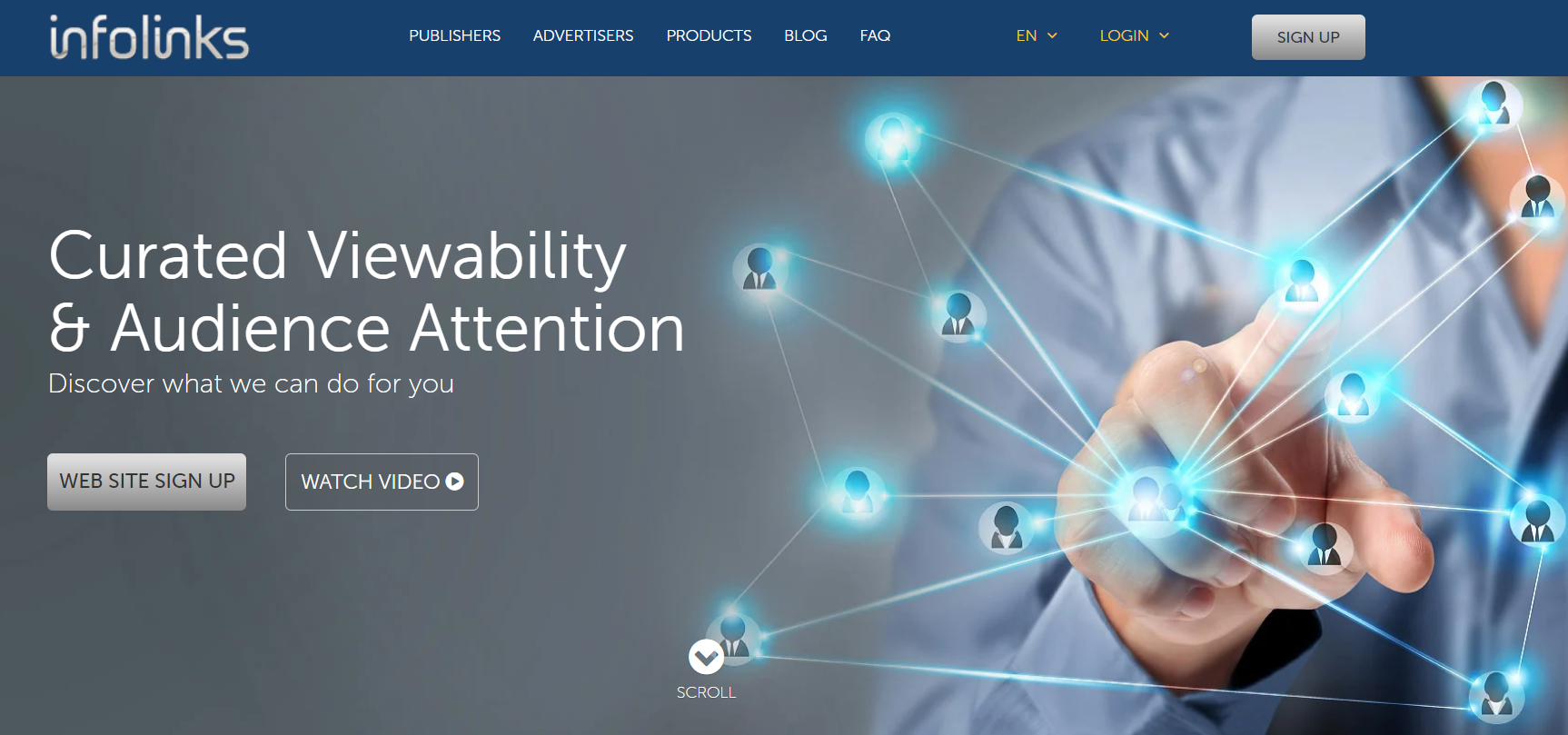
Unlike traditional approaches that involve creating new content, Infolinks seamlessly integrates ads by associating them with relevant keywords already present in your articles.
Infolinks provides website owners with a versatile approach to diversify their advertising strategy, engaging their audience through various touchpoints.
By incorporating ads within the context of your content, Infolinks ensures a natural and non-disruptive integration that improves the user experience while generating revenue.
2. Outbrain
Outbrain operates as a similar advertising network to Taboola, offering a comparable approach to website monetization.
It allows to incorporate of “sponsored links” or “stories from the web,” a popular inclusion among renowned publishers and news outlets.
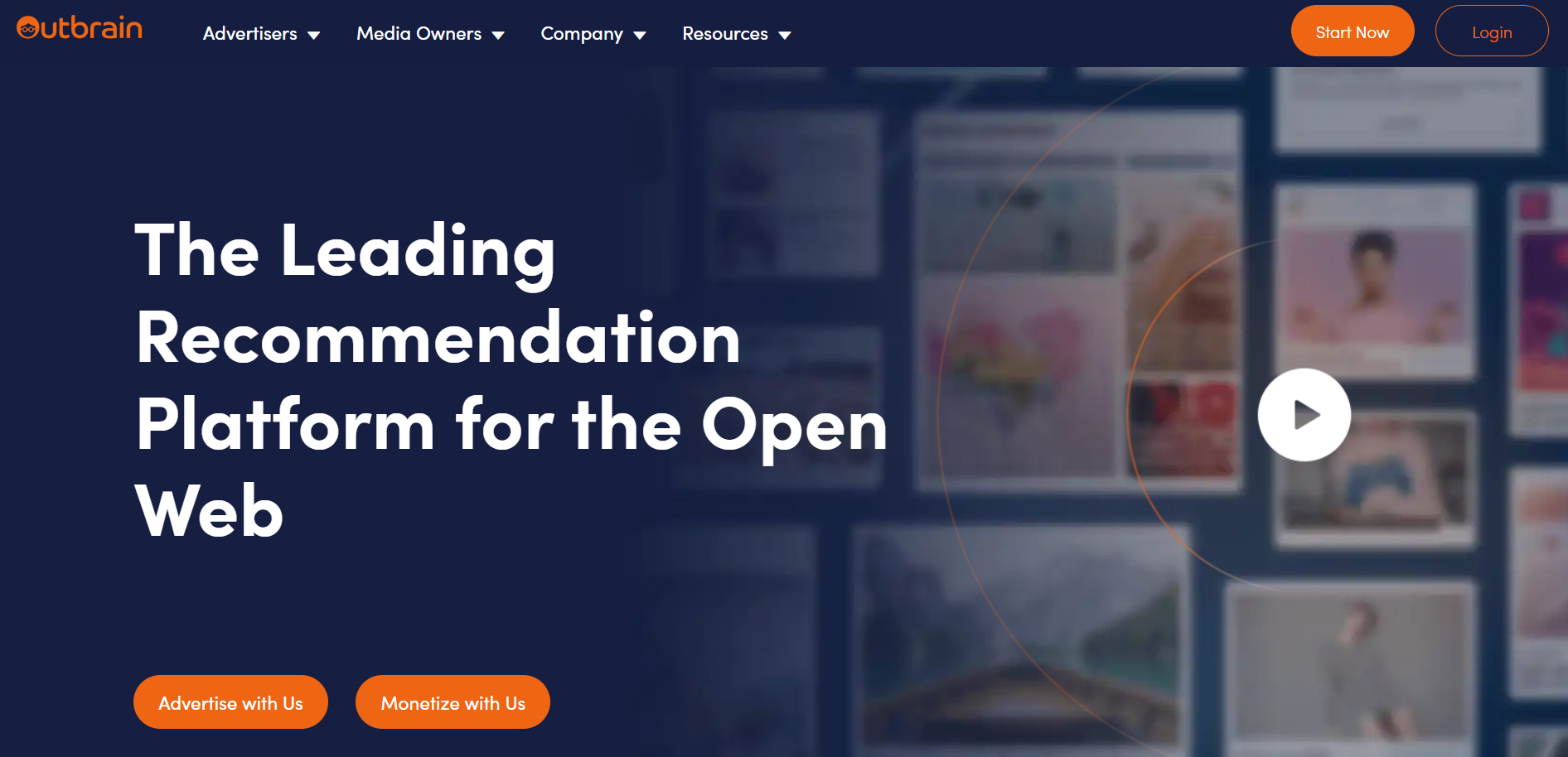
Outbrain highlights its partnerships with high-profile publishers, emphasizing a focus on quality rather than sheer site volume.
However, much like Taboola, Outbrain tends to prefer larger publishers for approval, which might not be ideal for smaller websites seeking to monetize their content.
3. Taboola
Taboola offers a powerful pathway for website monetization through its post-content content recommendation strategy, a tactic commonly seen on major publishers and digital magazines.
This type of content recommendation is instantly recognizable, often featuring enticing headlines such as “Unlocking the Secrets to Saving Money Like a Pro Educator” or “Exploring the Top 10 Superfoods for a Longer Life.”
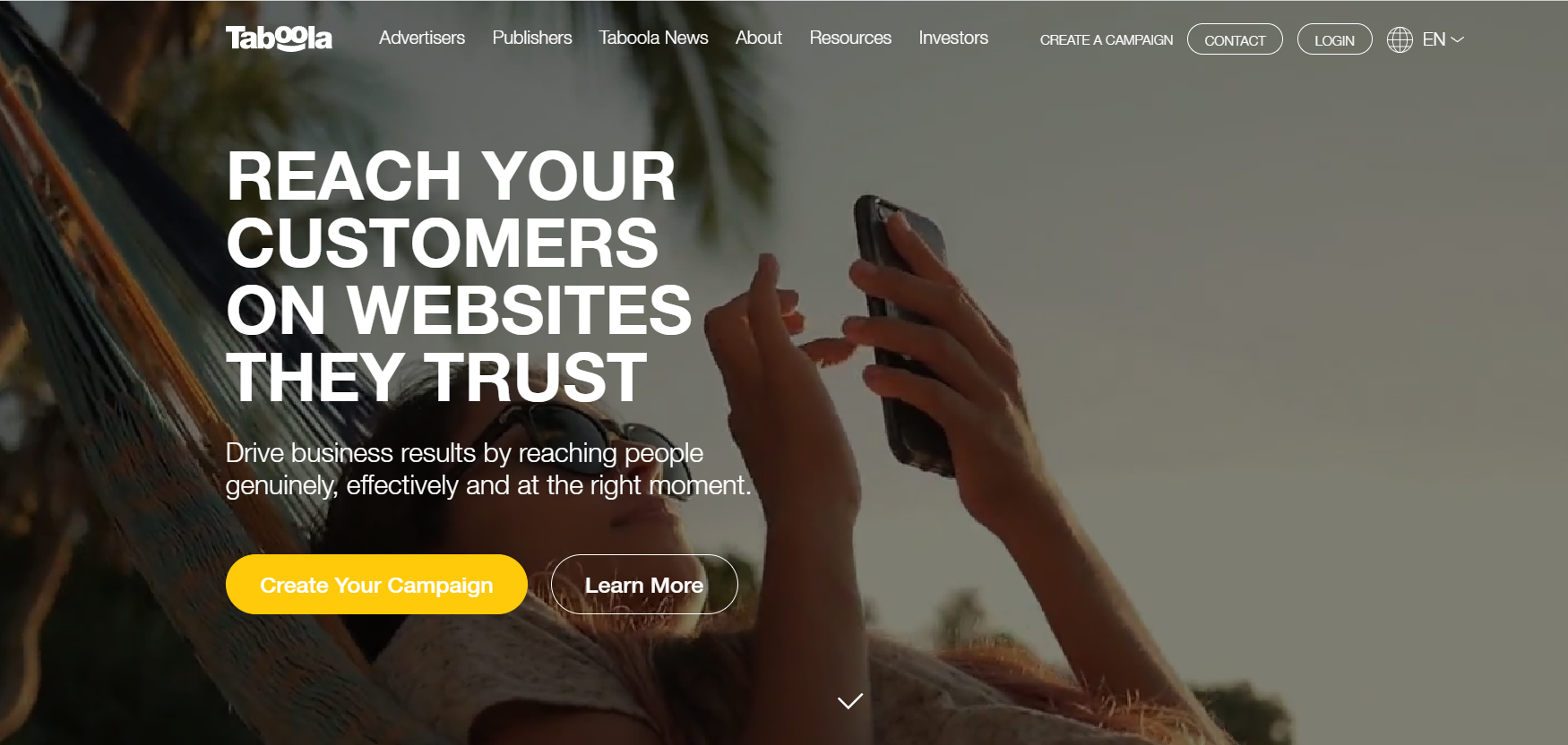
Renowned for its effectiveness in content recommendation advertising, Taboola stands out as a leading option. However, it’s worth noting that getting approved by Taboola typically requires a minimum monthly visitor count of at least 500,000.
In our exploration, we’ll also delve into similar networks that share these attributes, some of which may have more lenient traffic thresholds for acceptance.
4. Amazon Associates
Amazon provides a more automated method for product placements through its Native Shopping Ads feature.
This streamlined approach allows for the effortless integration of contextual advertisements on your website.
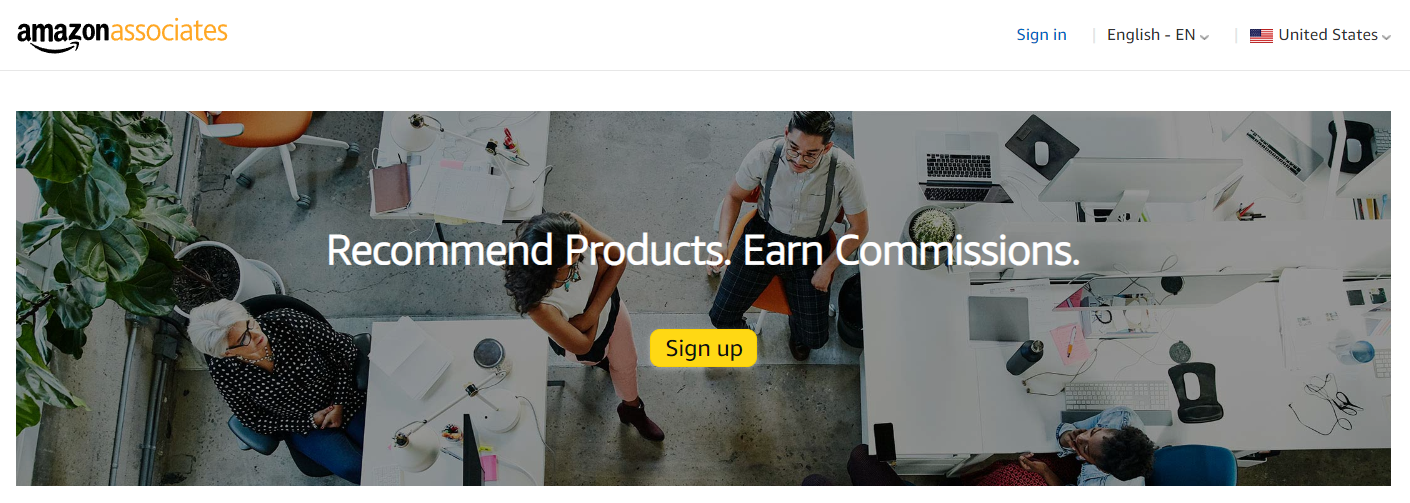
With Native Shopping Ads, your website can easily display Amazon products that are relevant to your content. When visitors click on these ads and make purchases, you earn commissions.
It’s important to note that the commissions aren’t limited to just the advertised product; they can extend to other items that the customer adds to their shopping cart.
While the payment is received upon successful checkout, the advantage lies in the potential to earn commissions from a variety of items added to the cart, enhancing your revenue potential.
5. Google Adsense
Google AdSense is indeed one of the most well-known and widely used display advertising programs on the internet.
Its reputation and prevalence in the online advertising space make it a fundamental inclusion in any list of top publisher ad networks.
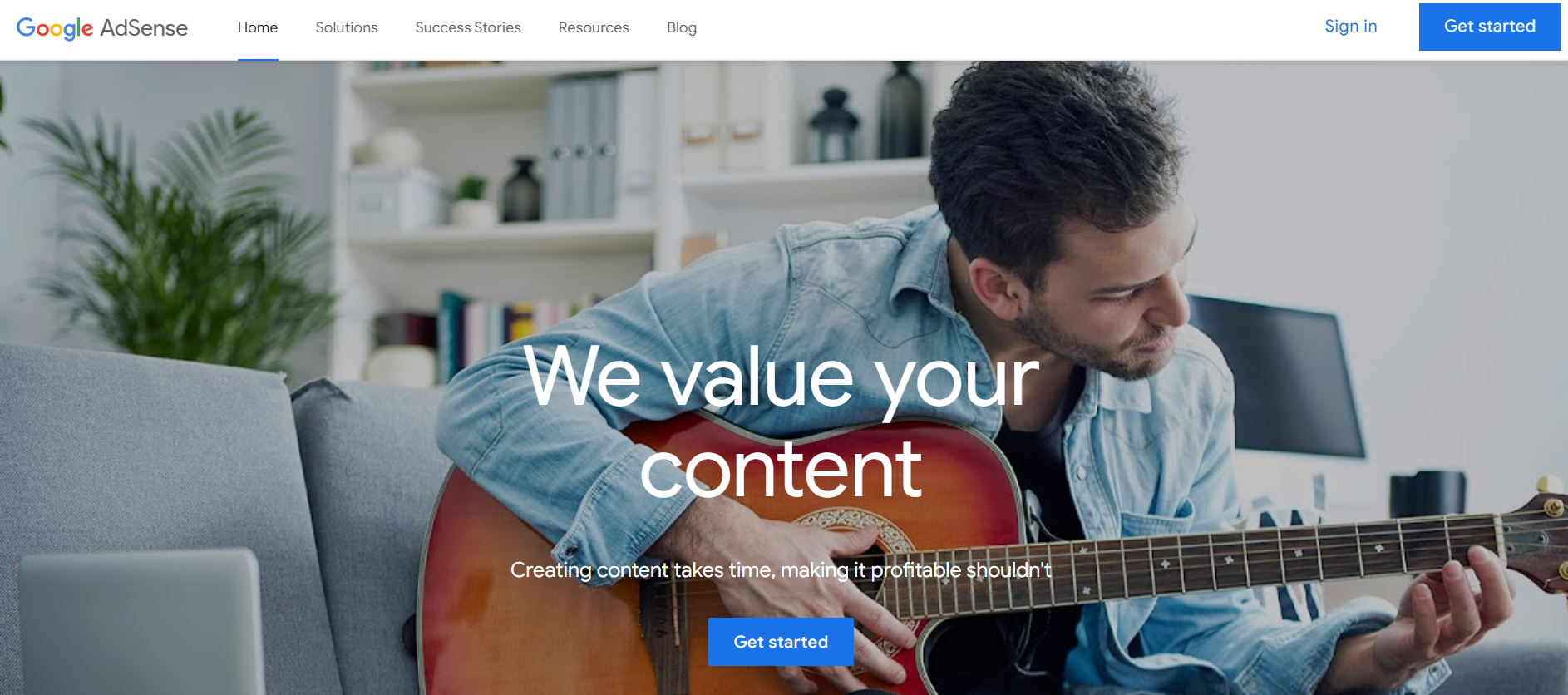
AdSense’s process is simple: by integrating its code into your website, Google automatically displays contextually relevant ads to your visitors.
Furthermore, publishers have the option to let Google optimize ad placements automatically, which requires minimal ongoing effort while potentially improving ad performance and revenue generation.
The familiarity and reach of Google AdSense make it a go-to choice for many website owners looking to monetize their content.
6. Mediavine
Mediavine is a well-regarded ad network that holds a strong appeal for content creators, especially those in lifestyle niches such as cooking, home decor, travel, and parenting.
While Mediavine is not limited exclusively to these categories, it has established a notable presence in these fields.
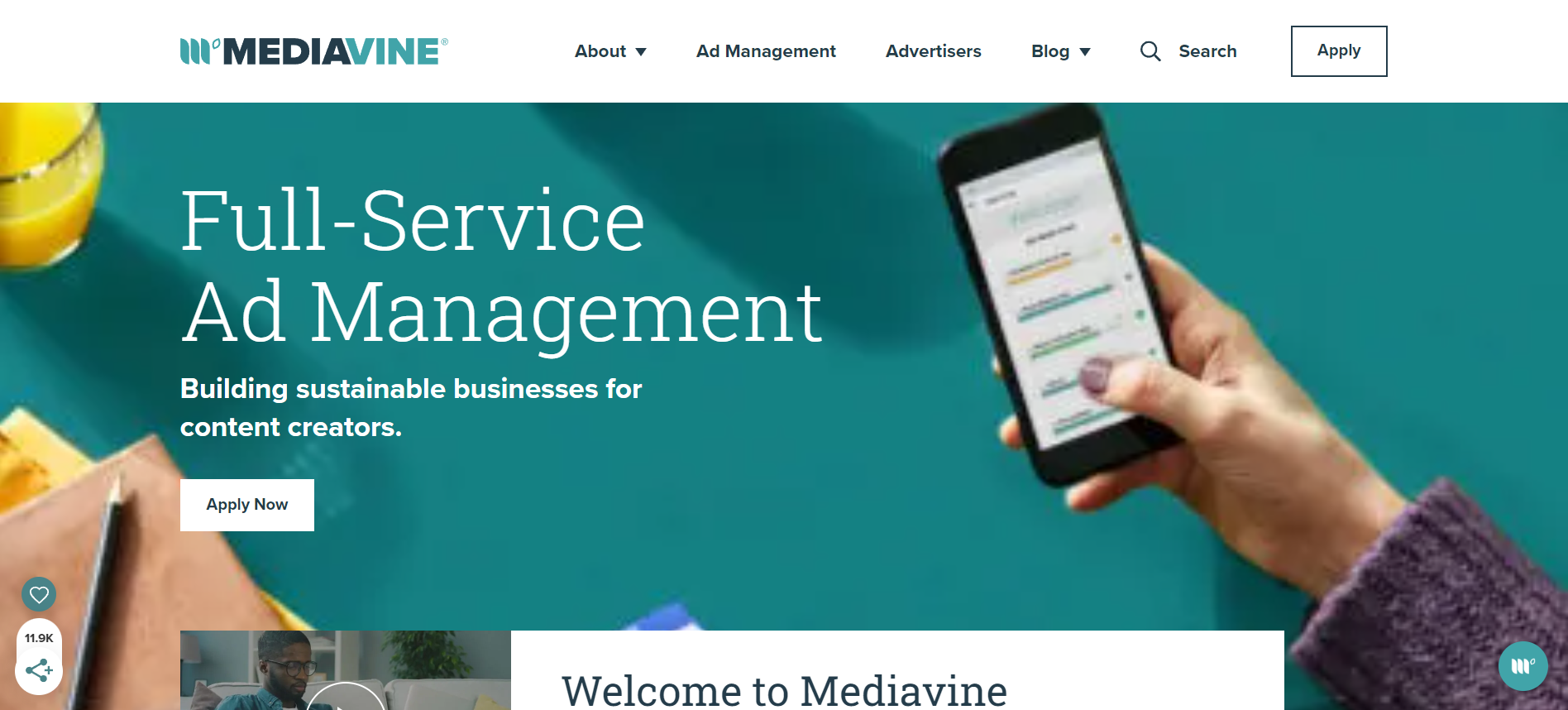
Similar to AdThrive, Mediavine prioritizes the interests of content creators. Interestingly, the team behind Mediavine is also recognized as publishers, overseeing platforms like The Hollywood Gossip and Food Fanatic.
Mediavine’s eligibility requirements are notably more accessible than those of AdThrive. With just 50,000 monthly visits, publishers can qualify for the program, making it an enticing option for individuals and websites looking to enter the world of monetization.
7. Raptive (Formerly AdThrive)
Raptive is a notable ad network that focuses primarily on bloggers and publishers who specialize in lifestyle content.
This encompasses a wide range of topics such as cooking, home improvement, travel experiences, parenting insights, and do-it-yourself (DIY) projects, among others.
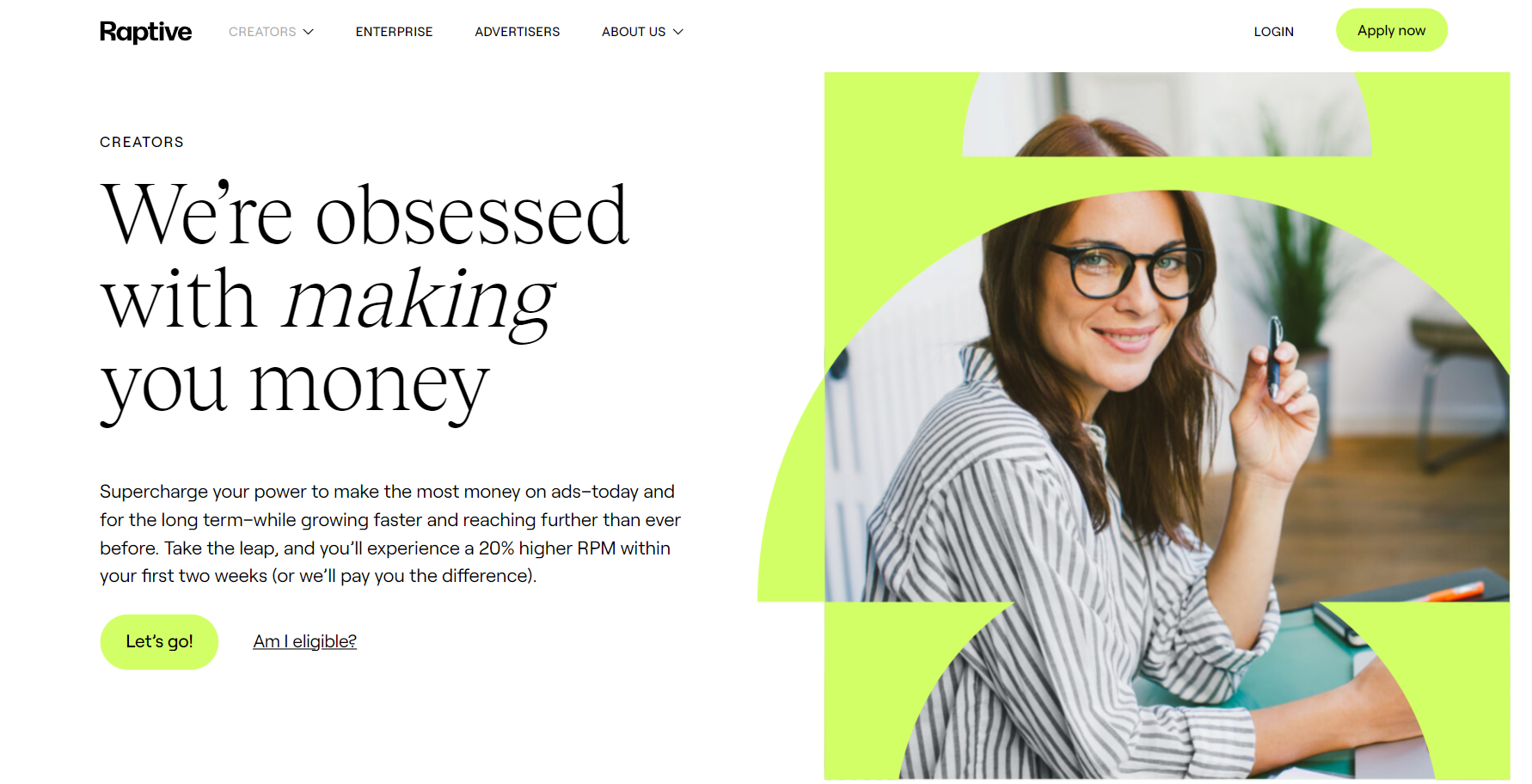
While Raptive’s services extend beyond these specific niches, its effectiveness shines the most within these thematic areas.
While Raptive welcomes members from various backgrounds, its performance truly excels when collaborating with advertisers from these particular categories.
The emphasis on lifestyle-oriented publishers underscores Raptive’s dedication to supporting and promoting success within these specific segments of the blogging and publishing landscape.
8. Monumetric
Monumetric is a distinctive ad network that prioritizes the interests of advertisers and publishers alike, all while maintaining a positive user experience on websites.
The concept is simple: After becoming a part of the Monumetric network, you provide information about the ad space available on your website.
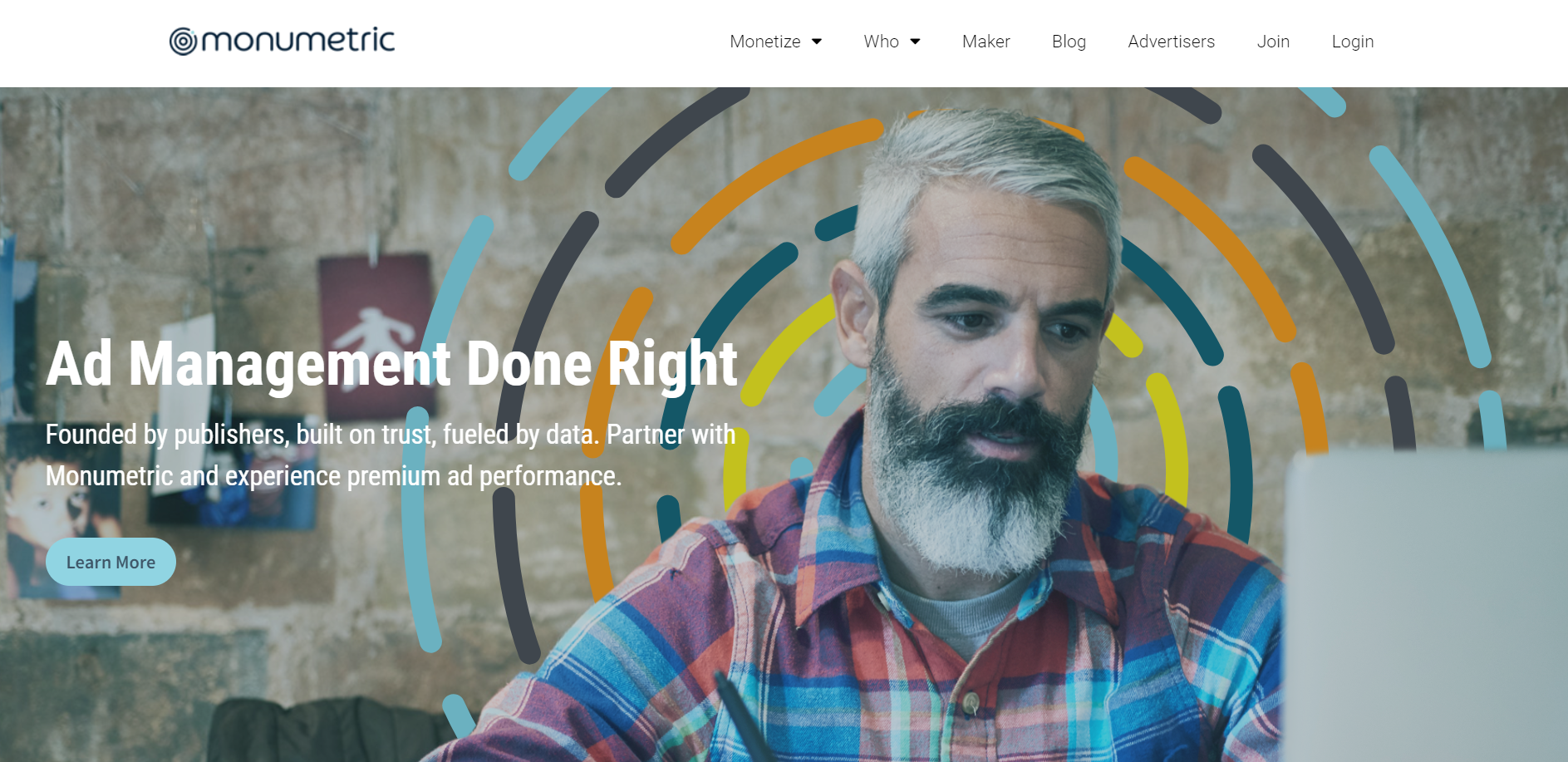
Monumetric then enhances this inventory by incorporating the most lucrative Cost Per Mille (CPM) offers currently available.
This approach is designed to maximize revenue generation without negatively impacting the browsing experience of your site’s visitors.
Additionally, Monumetric offers the flexibility to exclude ads from specific companies or industries, allowing you to ensure that the ads displayed align with the values and themes of your website.
9. Media.net
Media.net is a substantial contextual advertising network that holds a strong position in the online advertising landscape.
Its size and reputation make it a popular alternative to Google AdSense, making it an appealing choice for both publishers and bloggers.
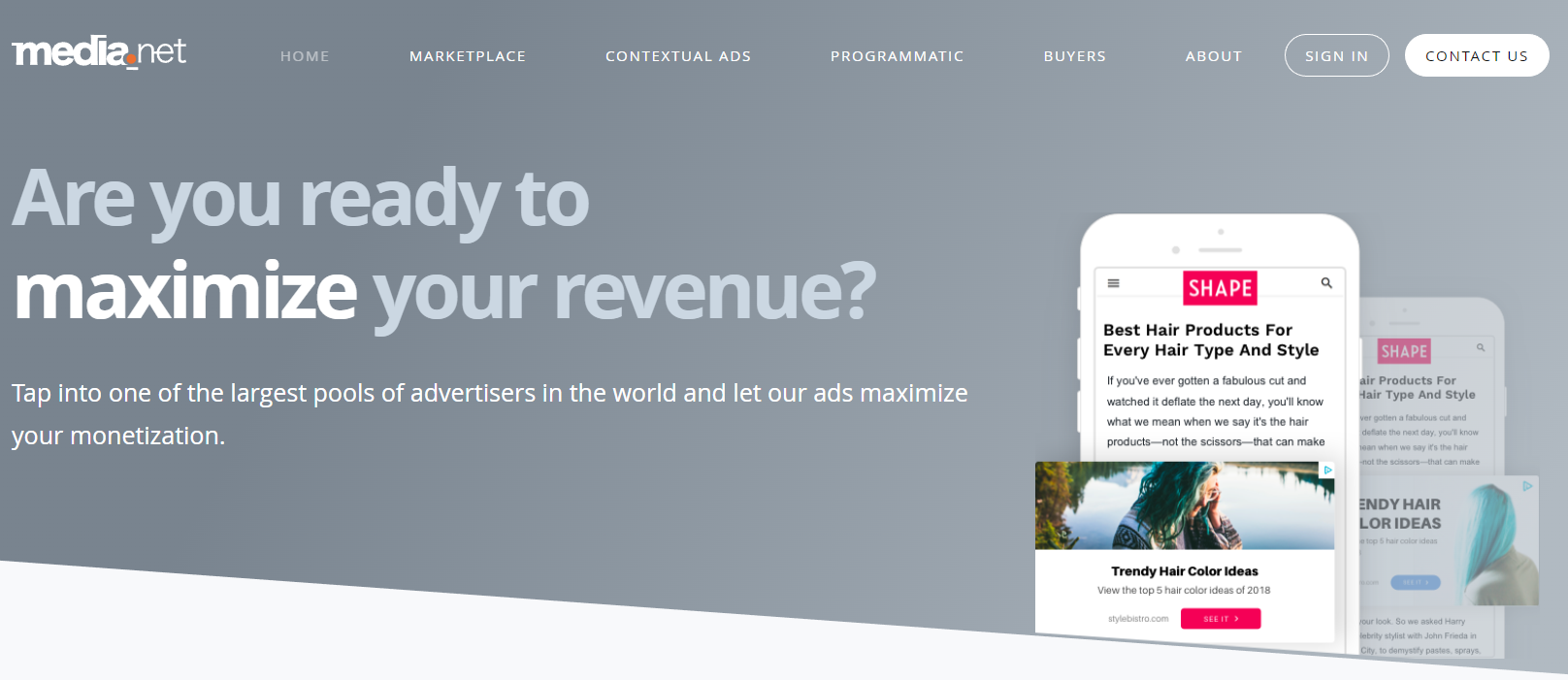
One of Media.net’s strengths lies in its versatility, as it offers a seamless delivery of both text and display ads.
Additionally, the platform provides the convenience of allowing Media.net to automatically determine the most suitable ad dimensions for your website’s design and layout.
In addition to its diverse ad offerings, Media.net features a programmatic platform that caters to those who prefer a streamlined and automated approach to advertising.
This combination of features makes Media.net a notable player in the contextual advertising space.
10. Ezoic
Ezoic is widely regarded as a top-notch advertising solution for many publishers.
What sets Ezoic apart is its seamless integration with prominent affiliate networks such as Media.net and Google AdSense.
Ezoic’s distinctive feature lies in its AI-driven machine-learning framework, which is designed to optimize advertising revenue.
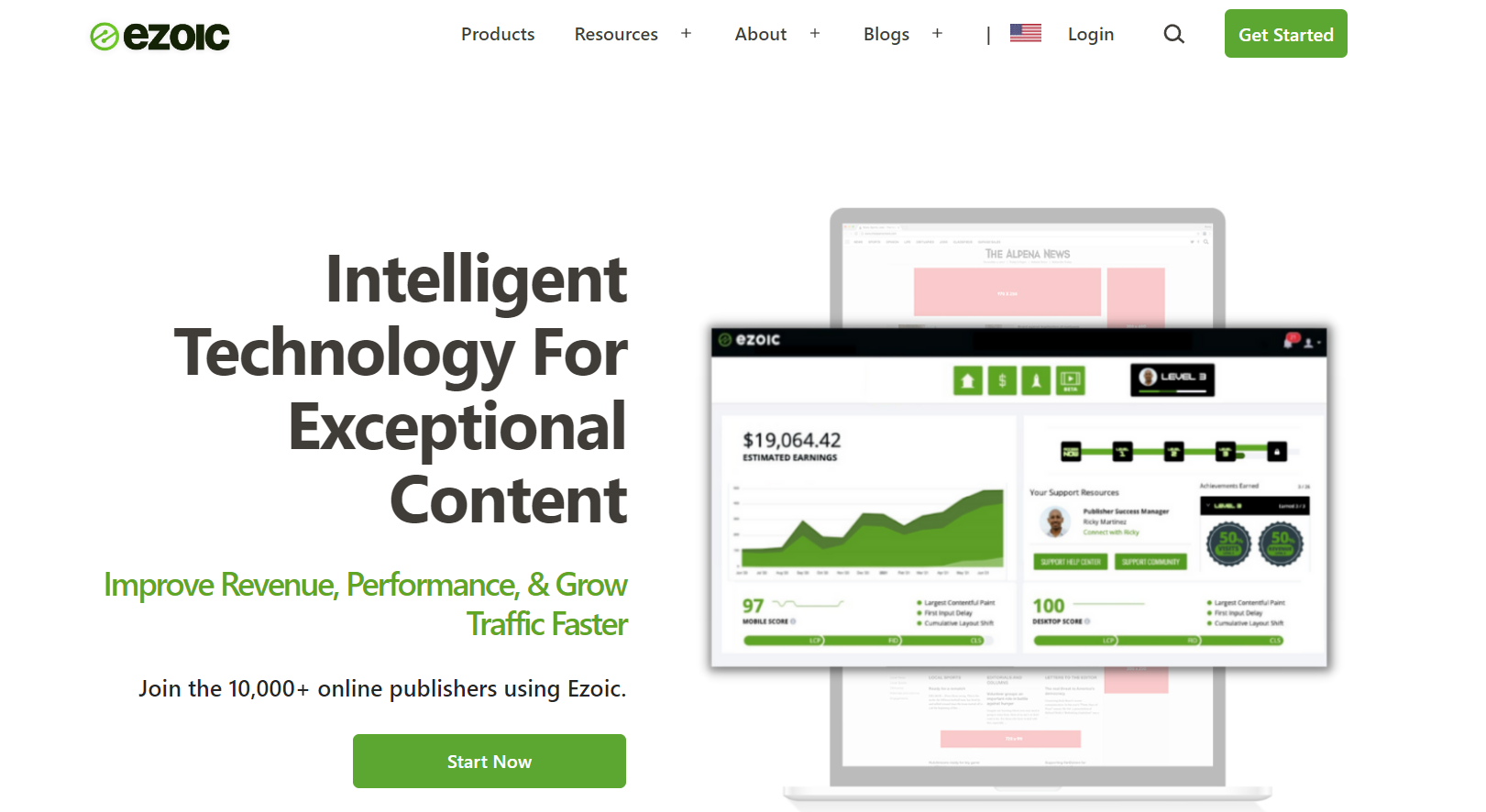
Using machine learning algorithms, Ezoic continuously runs tests with different ad types, placements, and other variables to identify the configurations that generate the highest earnings.
Simplifying the process, Ezoic offers a user-friendly drag-and-drop feature for setting up testing locations and optimizing ad placements, making it a popular choice among publishers looking to maximize their advertising revenue while maintaining a positive user experience.
Quick Links:
- 10 Best Adult Ad Networks
- 10 Best Pop-Under Ad Networks
- 10 Best Push Notification Ad Networks
- 10 Best PPV/CPV Networks For Advertisers & Publishers
Conclusion: Best Ad Networks For Publishers 2024
Choosing the right ad network for your publishing endeavors is a crucial decision that can impact both your revenue and the experience you provide to your audience.
The diversity of options available allows publishers to tailor their choices to their specific needs and goals.
From Google AdSense’s widespread recognition to specialized networks like Media.net and Ezoic that use AI to optimize revenue, each network offers a unique approach to monetization.
Additionally, networks like Infolinks, Outbrain, and Taboola cater to specific content styles and engagement patterns, providing opportunities for publishers to explore alternative strategies.
Ultimately, the decision should be guided by a thorough understanding of your content, target audience, and your own preferences as a publisher.
By considering factors such as the type of content you produce, your traffic volume, and the level of control you want over your ads, you can make an informed choice that aligns with your goals and maximizes your success in the ever-evolving world of online publishing.
